Transnistrien |
|
|
|
| Übersicht – Contents: | |
Transnistrien |
|
|
|
| Übersicht – Contents: | |
Flaggen – Flags: |
|
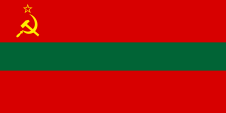 |
National- und Staatsflagge – national and state flag, Seitenverhältnis – ratio = 1:2, Quelle/Source, nach/by: Flags of the World |
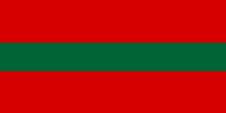 |
Handelsflagge – merchant flag, Seitenverhältnis – ratio = 1:2, Quelle/Source, nach/by: Flags of the World, Wikipedia (DE) |
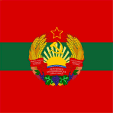 |
Flagge des Präsidenten – flag ot the President, Seitenverhältnis – ratio = 3:5, Quelle/Source, nach/by: Wikipedia (DE) |
historische Flaggen – historical Flags: |
|
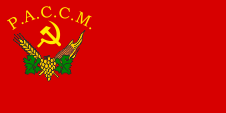 |
1925–1938, Flagge der Moldauischen Autonomen Sozialistischen Sowjetrepublik – Flag of Moldovan Autonomous Soviet Socialist Republic, Seitenverhältnis – ratio = 1:2, Quelle/Source, nach/by: World Statesmen |
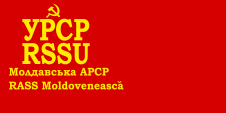 |
1938, Flagge der Moldauischen Autonomen Sozialistischen Sowjetrepublik – Flag of Moldovan Autonomous Soviet Socialist Republic, Seitenverhältnis – ratio = 1:2, Quelle/Source, nach/by: World Statesmen |
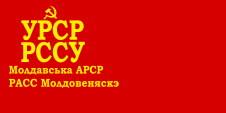 |
1938–1940, Flagge der Moldauischen Autonomen Sozialistischen Sowjetrepublik – Flag of Moldovan Autonomous Soviet Socialist Republic, Seitenverhältnis – ratio = 1:2, Quelle/Source, nach/by: World Statesmen |
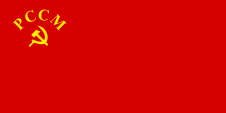 |
1940–1952, Flagge der Moldauischen Sozialistischen Sowjetrepublik – Flag of the Moldavian Soviet Socialist Republic, Seitenverhältnis – ratio 1:2, Quelle/Source, nach/by: World Statesmen |
 |
1952–1991, Flagge der Moldauischen Sozialistischen Sowjetrepublik – Flag of the Moldavian Soviet Socialist Republic, Seitenverhältnis – ratio 1:2, Quelle/Source, nach/by: World Statesmen |
| Transnistrien setzt das Erbe der 1924 gegründeten Moldauischen Autonomen Sozialistischen Sowjetrepublik (MASSR) fort, die von 1940 bis 1991 um das Gebiet der heutigen Republik Moldau (Moldawien) erweitert war und ab 1940 Moldauische Sozialistische Sowjetrepublik (MSSR) hieß. Somit ist die heutige Flagge von Transnistrien die historisch letzte Flagge der 1991 wiederhergestellten Sowjetrepublik. Die Flagge zeigt drei Streifen in Rot, Grün und Rot im Verhältnis 3:2:3 mit Hammer, Sichel und Stern – Symbole des Kommunismus – in der Oberecke. Den Bürgern des Landes ist es jedoch von Gesetz her erlaubt, die Flagge als einfache Streifenflagge ohne die kommunistische Symbolik für private Zwecke zu verwenden. Für Behörden und Ämter ist die Flagge mit Hammer, Sichel und Stern vorgeschrieben. |
Transnistria continues
the legacy of the Moldovan Autonomous Soviet Socialist Republic (MASSR),
founded in 1924, which was expanded to include the territory of today's
Republic of Moldova (Moldavia) from 1940 to 1991 and was called Moldovan
Soviet Socialist Republic (MSSR) from 1940 onwards. Thus, the today's flag of Transnistria is historically the last flag of the Soviet republic, which was restored in 1991. The flag features three stripes of red, green and red in a 3:2:3 ratio with a hammer, sickle and star – symbols of communism – in the upper corner. However, the country's citizens are allowed by law to use the flag as a simple striped flag without the communist symbolism for private purposes. The flag with a hammer, sickle and star is required for authorities and offices. |
| Quelle/Source: Wikipedia (EN), Flags of the World, Volker Preuß | |
Wappen – Coat of Arms: |
|
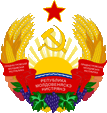 |
seit/since 1991, Wappen von Transnistrien – coat of arms of Transnistria, Quelle/Source, nach by: commons.wikimedia.org |
| Das Wappen Transnistriens wurde wahrscheinlich 1991 eingeführt. Es entspricht bis auf wenige Details dem Wappen der bis zum 21.12.1991 bestehenden Moldauischen Sozialistischen Sowjetrepublik. Das Wappen zeigt im Wesentlichen eine aufgehende Sonne und Früchte des Landes. In dem roten Spruchband in der Mitte erscheint der Name des Staates. Es sind auch Darstellungen des Wappens bekannt, welche im roten Spruchband in kyrillischer Schrift die Abkürzung des Staatsnamens tragen. Links und rechts: PMR (Moldawisch) in der Mitte RMN (Russisch/Ukrainisch). |
The coat of arms of
Transnistria was probably introduced in 1991. Except for a few details, it
corresponds to the coat of arms of the Moldovan Soviet Socialist Republic,
which existed until 21st of December in 1991. The coat of arms essentially
shows a rising sun and fruits of the land. The name of the state appears in
the red banner in the middle. Representations of the coat of arms are also known, which have the abbreviation of the state name in the red banner in Cyrillic script. Left and right: PMR (Moldovan) in the middle RMN (Russian/Ukrainian). |
| Quelle/Source: Volker Preuß | |
Flugzeugkokarde – aircraft roundel: |
|
 |
Flugzeugkokarde – aircraft roundel Quelle/Source, nach/by: Flags of the World |
| Zahlen und Fakten – Numbers and Facts: | |
|
|
|
|
|
|
|
|
|
|
|
|
|
|
|
|
|
ca. 900
· das Gebiet des heutigen Transnistrien wird Teil des Kiewer Reichs (Kiewer
Rus) 1061–1240 · das Gebiet ist Teil des Reiches der Kumanen 1359 · Gründung des rumänischen Fürstentums Moldau zwischen den Karpaten und dem Dnjestr 1387 · das Gebiet des heutigen Transnistrien wird von Polen-Litauen abhängig 1526 · der Süden des Landes wird vom Osmanischen Reich abhängig 1772 · Erste Polnische Teilung, Russland annektiert alles polnische Territorium östlich der Düna und des Dnjepr, einschließlich des Nordens des heutigen Transnistrien 1792 · Russland annektiert mit der ehemaligen osmanischen Provinz Jedisan auch den Süden des heutigen Transnistrien 1806–1812 · russisch-türkischer Krieg 1812 · Frieden von Bukarest, der östliche Teil des rumänischen Fürstentums Moldau (zwischen den Flüssen Prut und Dnjestr, das heutige Moldawien) kommt unter dem Namen Bessarabien an Russland 1853–1856 · Krimkrieg, Bessarabien verbleibt bei Russland 1914–1918 · Erster Weltkrieg, die Ukraine löst sich im März 1917 von Russland und erklärt ihre Unabhängigkeit, Transnistrien gehört jetzt zur Ukraine 1917 · bolschewistische Revolution in Russland, Bürgerkrieg 22.01.1918 · Errichtung der Sowjetmacht in der Ukraine 09.04.1918 · Annexion von Bessarabien durch das Königreich Rumänien 30.12.1922 · Gründung der Sowjetunion (UdSSR), Zusammenschluss der Sowjetrepubliken von Russland (RSFSR), Weißrussland, der Ukraine und der Transkaukasischen Föderation 1924 · Gründung der Moldauischen Autonomen Sozialistischen Sowjetrepublik (MASSR) in Transnistrien (auf dem Gebiet der Sowjet-Ukraine) jedoch war diese Republik wesentlich größer als das heutige Transnistrien 1939–1945 · Zweiter Weltkrieg: 1940 die Sowjetunion zwingt Rumänien zur Abtretung von Bessarabien, der Südteil des Landes wird abgetrennt und der Sowjet-Ukraine angeschlossen, der Nordteil wird an die verkleinerte Moldauische Autonome Sozialistische Sowjetrepublik angeschlossen und die Moldauische Sozialistische Sowjetrepublik (MSSR) proklamiert, 1941 Rumänien kann Bessarabien wieder besetzen und annektiert die gesamte MSSR und alle Territorien bis zum Südlichen Bug, 1944 Bessarabien wird von sowjetischen Truppen besetzt, Wiederherstellung der MSSR 1947 · Friedensvertrag von Paris, Rumänien erkennt die sowjetische Annexion und den Bestand der MSSR an 1990 · Forderungen nach der Unabhängigkeit Moldawiens, die in Transnistrien lebenden Russen befürchten einen baldigen Anschluss der MSSR an Rumänien September 1990 · die Republik Transnistrien erklärt sich für unabhängig 27.08.1991 · die MSSR proklamiert ihre Unabhängigkeit und nennt sich Republik Moldawien (Moldova) 01.12.1991 · eine Volksabstimmung in Transnistrien bestätigt die Unabhängigkeit Transnistriens von Moldawien, Ausbruch eins Bürgerkriegs in Transnistrien 08.12.1991 · Russland, die Ukraine und Weißrussland erklären sich für souverän und gründen die „Gemeinschaft Unabhängiger Staaten” (GUS) 21.12.1991 · Beitritt aller ehemaligen Sowjetrepubliken der UdSSR zur GUS (außer Georgien), endgültiges Ende der Sowjetunion 1991–1992 · Bürgerkrieg (eigentlich Krieg zwischen Moldawien und Transnistrien), Transnistrien siegt dank des militärischen Eingreifens von Russland 1994 · eine Volksabstimmung in Moldawien lehnt den Anschluss an Rumänien ab 24.12.1995 · eine neue Volksabstimmung (von Moldawien nicht anerkannt) in Transnistrien bestätigt die Unabhängigkeit Transnistriens und befürwortet einen Eintritt in die GUS 17.09.2006 · eine neue Volksabstimmung (von Moldawien nicht anerkannt) in Transnistrien bestätigt zu 97% die Unabhängigkeit Transnistriens und befürwortet einen späteren Anschluss an Russland (Russische Föderation) 18.03.2014 · die Regierung Transnistriens stellt einen Beitrittsantrag zur Russischen Föderation |
|
ca. 900
· the area of the today’s Transnistria becomes a part of the Empire of Kiev
(Rus of Kiev) 1061–1240 · the area is a part of the Empire of the Cumans 1359 · establishment of the Romanian Principality of Moldova between the Carpathia Mountains and the Dnjestr River 1387 · the area of the today’s Transnistria becomes dependent from Poland-Lithuania 1526 · the south of the country becomes dependent from the Ottoman Empire 1772 · First Polish Division, Russia annexes all Polish territory eastern the Duena River and the Dnjepr River, including the north of the today’s Transnistria 1792 · Russia annexes with the former Ottoman Province of Jedisan even the south of the today’s Transnistria 1806–1812 · Russian-Turkish War 1812 · Peace of Bucarest, the eastern part of the Romanian Principality of Moldavia (between the rivers Prut and Dnjestr, the today’s Moldova) comes under the name Bessarabia to Russia 1853–1856 · Crimean War, Bessarabia remains at Russia 1914–1918 · First World War, the Ukraine detaches from Russia in March 1917 and declares its independence, Transnistria belongs now to Ukraine 1917 · Bolshevist revolution in Russia, civil war 22nd of January 1918 · establishment of the Soviet Power in the Ukraine 9th of April 1918 · annexation if Bessarabia by the Kingdom of Romania 30th of December 1922 · foundation of the Soviet Union (USSR), combination of the Soviet Republics of Russia (RSFSR), Belarus (White Russia), Ukraine and of the Transcaucasian Federation 1924 · foundation of the Moldovan Autonomous Socialistic Soviet Republic (MASSR) in Transnistria (on the territory of Soviet Ukraine), however, this republic was much larger than today's Transnistria 1939–1945 · Second World War: 1940 the Soviet Union forces Romania to cede Bessarabia, the southern part of the country becomes separated and annexed by the Soviet Ukraine, the northern part becomes annexed to the minimized Moldovan Autonomous Socialistic Soviet Republic and then was proclaimed the Moldovan Socialistic Soviet Republic (MSSR), 1941 Romania is able to occupy Bessarabia again and annexes the the whole MSSR and all territories until the Southern Bug River, 1944 Bessarabia becomes occupied by Soviet troops, re-establishment of the MSSR 1947 · Peace Treaty of Paris, Romania recognizes the soviet annexations and the subsistence of the MSSR 1990 · claims for the independence of Moldova, the in Transnistria living Russians fear a speedy affiliation of the MSSR to Romania September 1990 · the republic of Transnistria declares itself for independent 27th of August 1991 · the MSSR proclaims its independence and names itself Republic of Moldova 1st of December 1991 · a plebiscite in Transnistria confirms the independence of Transnistria from Moldova, outbreak of a civil war in Transnistria 8th of December 1991 · Russia, Ukraine and Belarus (White Russia) declare themselves for sovereign and establish the „Commonwealth of Independent States” (CIS) 21st of December 1991 · joining of all former Soviet Republics of the USSR to the CIS (except Georgia), irrevocable end of the Soviet Union 1991–1992 · civil war (in reality war between Moldova and Transnistria), Transnistria triumphs over Moldova because of the military intervention of Russia 1994 · a plebiscite in Moldova rejects the affiliation to Romania 24th of December 1995 · a new plebiscite (not recognized by Moldova) in Transnistria confirms the independence of Transnistria and supports an entry in the CIS 17th of September 2006 · a new plebiscite (not recognized by Moldova) in Transnistria confirms with 97% the independence of Transnistria and supports a later connection to Russia (Russian Federation) 18th of March in 2014 · the government of Transnistria submits an application to join the Russian Federation |
| Quelle/Source: Atlas zur Geschichte, Wikipedia (DE), World Statesmen, Volker Preuß |
| Landkarten: | ||
|
territoriale Entwicklungen in der Region zwischen 1550 und heute territorial developments in the region between 1550 and nowadays: |
||
|
|
|
|
|
|
|
|
|
| Landkarten/Maps: Volker Preuß | ||
| Der Name "Transnistrien" bedeutet "Land jenseits des Dnjestr". Er wurde während des Zweiten Weltkriegs geprägt, als Rumänien das Gebiet zwischen Dnjepr und Südlichem Bug als "Transnistria" annektiert hatte. Wenn dieser Landesname so in Transnistrien ausgesprochen würde, wäre mit dem "Land jenseits des Dnjepr" eigentlich das feindliche Moldawien gemeint. Daher bezeichnet das Land sich selbst als "Cisnistrien": "Land diesseits des Dnjestr", oder eben auf Russisch "Pridnestrowje": "Land am Dnjestr" | The name
"Transnistria" means "country beyond the Dnjestr River". That name arised
during the Second World War as Romania annexed the area between Dnjepr River
and Southern Bug River. If this name is spoken in Transnistria, is with "country beyond the Dnjepr River" indeed meant the hostile Moldova. Because of that the country names itself "Cisnistria": "country nearside the Dnjestr River" or just in Russian "Pridnestrovye": "country at the Dnjestr River" |
| Quelle/Source: Volker Preuß | |